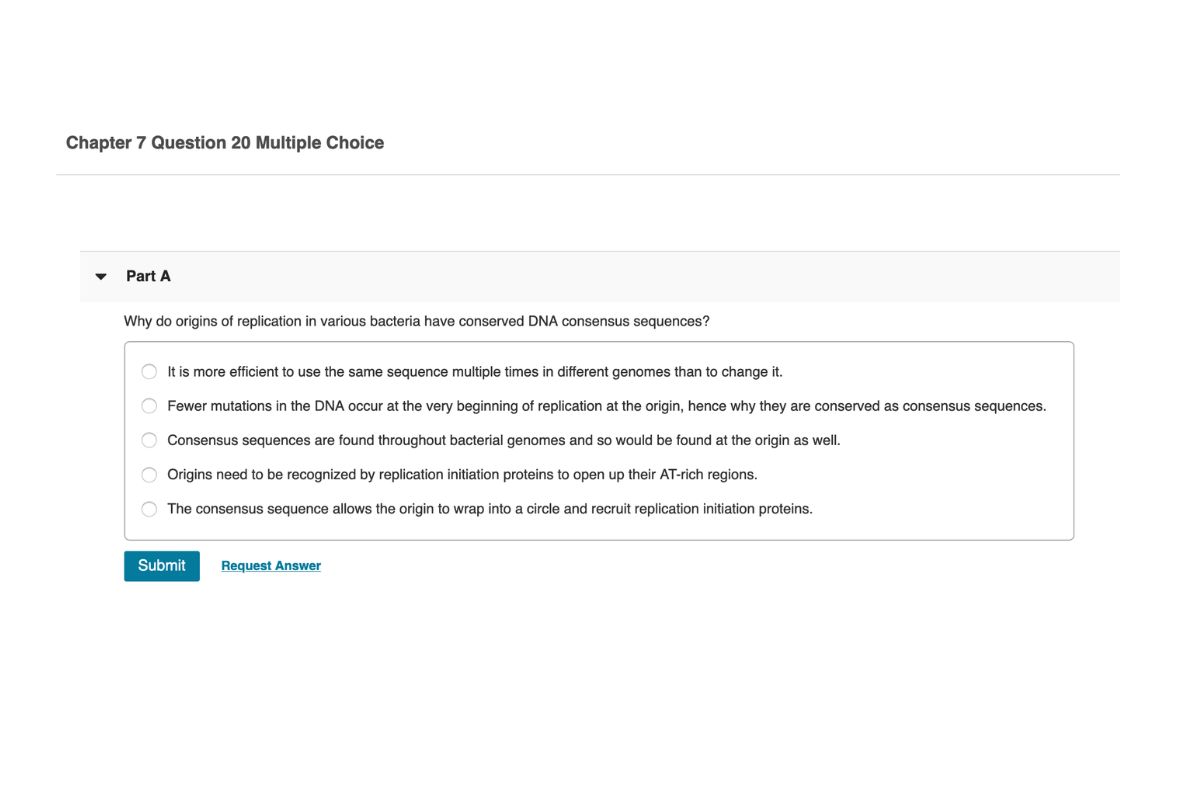The presence of conserved DNA consensus sequences in the origins of replication of various bacteria serves several important purposes:
- Initiation of Replication: The origin of replication is the specific site where DNA replication begins. The conserved DNA consensus sequences provide recognition sites for initiator proteins (often called DNA helicases) that are essential for initiating the unwinding and replication of the DNA molecule. These initiator proteins bind to the consensus sequences and initiate the replication process.
- Efficiency and Accuracy: Conserved DNA consensus sequences ensure that the replication process is highly efficient and accurate. The presence of these specific sequences helps the cell machinery precisely identify the starting point for DNA replication, reducing the likelihood of errors or mutations in the replicated DNA.
- Regulation: Conserved consensus sequences can also play a regulatory role in controlling the timing and frequency of DNA replication. They can act as binding sites for regulatory proteins that either promote or inhibit the initiation of replication, ensuring that DNA is replicated at the right time and under the appropriate conditions.
- Evolutionary Conservation: These sequences may be conserved over evolutionary time because they are critical for the survival and replication of the organism. Mutations in essential replication sequences could be detrimental and negatively impact an organism’s ability to replicate its DNA accurately.
In summary, the conserved DNA consensus sequences in the origins of replication of bacteria are essential for the accurate initiation and regulation of DNA replication. They ensure that the replication process is efficient, accurate, and tightly controlled, contributing to the organism’s survival and genome stability.




